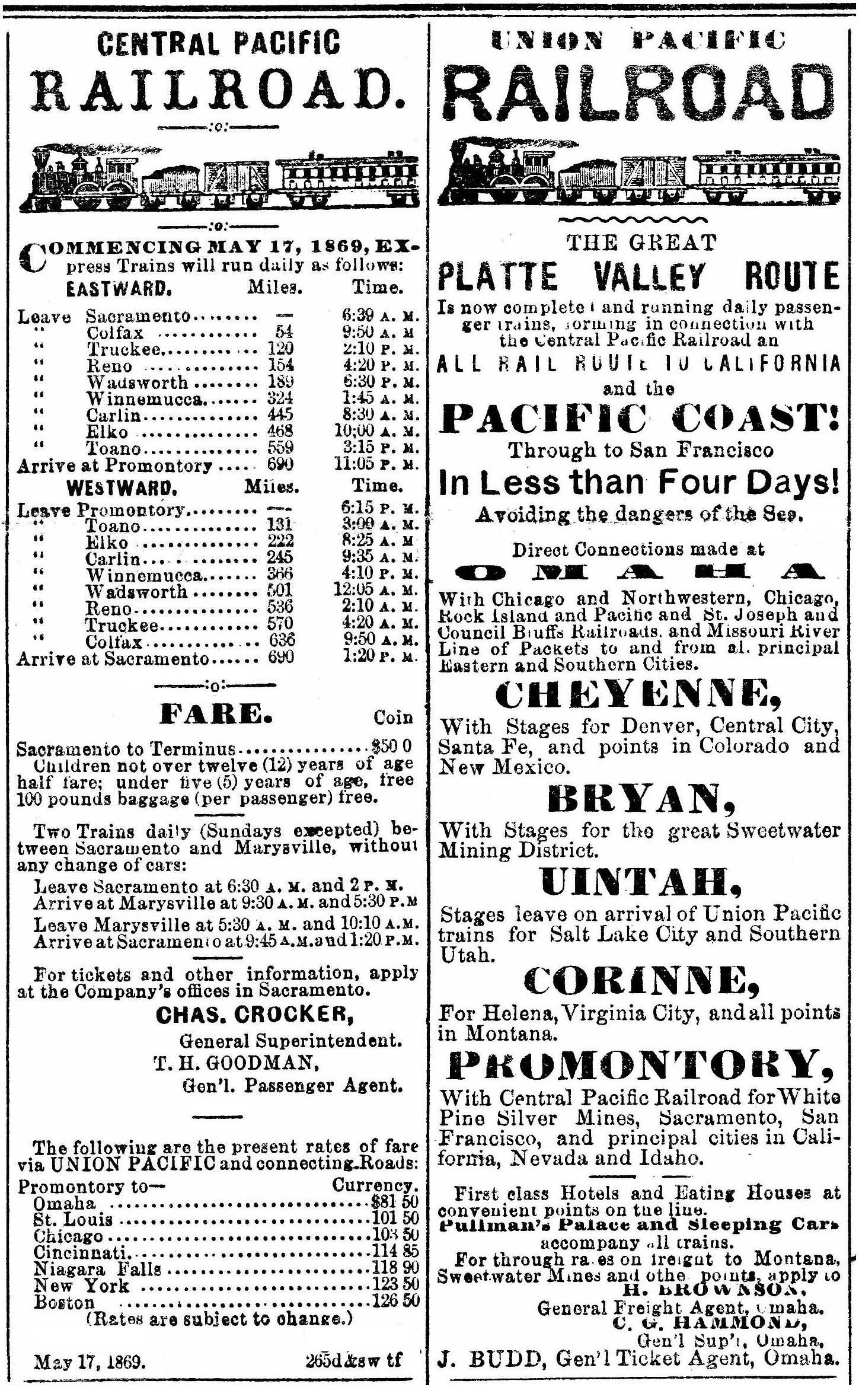
10 May 1869
Andrew J. Russell (1829–1902), Restored by Adam Cuerden
Yale University Libraries (via Wikimedia Commons)
There was a time that traveling coast to coast was an arduous task. You could take a long ship voyage down to the tip of South America (Cape Horn) and then sail north to get to San Francisco. You could get off at the Isthmus of Panama and walk over to the Pacific (and later by train) but it had its own risks as well. Or you could go as far west as the train would take you and take either a long wagon train voyage (or possibly a long stagecoach ride) until you got to the west coast. The completion of the transcontinental railway ended that on 10 May 1865 in Promontory, Utah.
The need for a transcontinental railroad was noticed as early as 1832. Connecting both coasts was needed in order to move freight, people, and even the military if needed. It was not until 1853 that the US Congress approved money for surveys to be done on possible routes. Tensions between North and South caused delays and where the line should begin. In 1862, with the Civil War going on, Congress approved the Pacific Railroad Act (1862) which gave loans and public land grants to build the railroad. The Union Pacific and Central Pacific rail lines began construction in Omaha and Sacramento.
Construction was arduous and difficult for both lines and the workers who built them. The Union Pacific used mostly Irish laborers, many who had served in the Civil War. Conditions in towns and settlements they had to use in most cases was simple and often miserable. Making it more difficult were the hot summers and often cold winters along with a great deal of lawlessness as well. The Central Pacific used Chinese laborers who worked brutal 12-hour days and were paid less than their counterparts on the Union Pacific. Building in the Sierra Nevada mountains proved very difficult, and avalanches were a frequent hazard in which whole work crews would be killed. Also misuse or mishandling of explosives would also take lives as well.
Yet despite all of this (and even initially building the lines that did not connect), the transcontinental railroad got done ahead of schedule in 1869. Remarkably it came under budget, which is extraordinary for a massive project of this type. Its construction allowed for the rapid expansion and development of the United States thanks to the rapid movement of freight and people across the country. By the end of June 1869, it was possible to travel entirely by rail from Jersey City, New Jersey to the Alameda Wharf in Oakland, CA. From there you hopped on a railway owned ferry to take you across the bay to San Francisco.

Source: The Cooper Collection of US Railroad History
Public Domain via Wikimedia Commons
Sources
“—.” Encyclopedia Britannica, 7 May 2024, www.britannica.com/technology/railroad/The-transcontinental-railroad.
—. “Transcontinental Railroad Completed, Unifying United States.” HISTORY, 9 May 2024, www.history.com/this-day-in-history/transcontinental-railroad-completed.
Staff, History Net. “The Transcontinental Railroad: Facts and Information.” HistoryNet, 24 Apr. 2023, www.historynet.com/transcontinental-railroad.
—. “Transcontinental Railroad.” Wikipedia, 29 Apr. 2024, en.wikipedia.org/wiki/Transcontinental_railroad.


 This is for those of you who travel on Caltrain, a commuter rail line that runs between San Francisco to San Jose in California. With the fall sports season well underway, many are taking it as an option to attend games and special events. All others can pass this post by.
This is for those of you who travel on Caltrain, a commuter rail line that runs between San Francisco to San Jose in California. With the fall sports season well underway, many are taking it as an option to attend games and special events. All others can pass this post by.